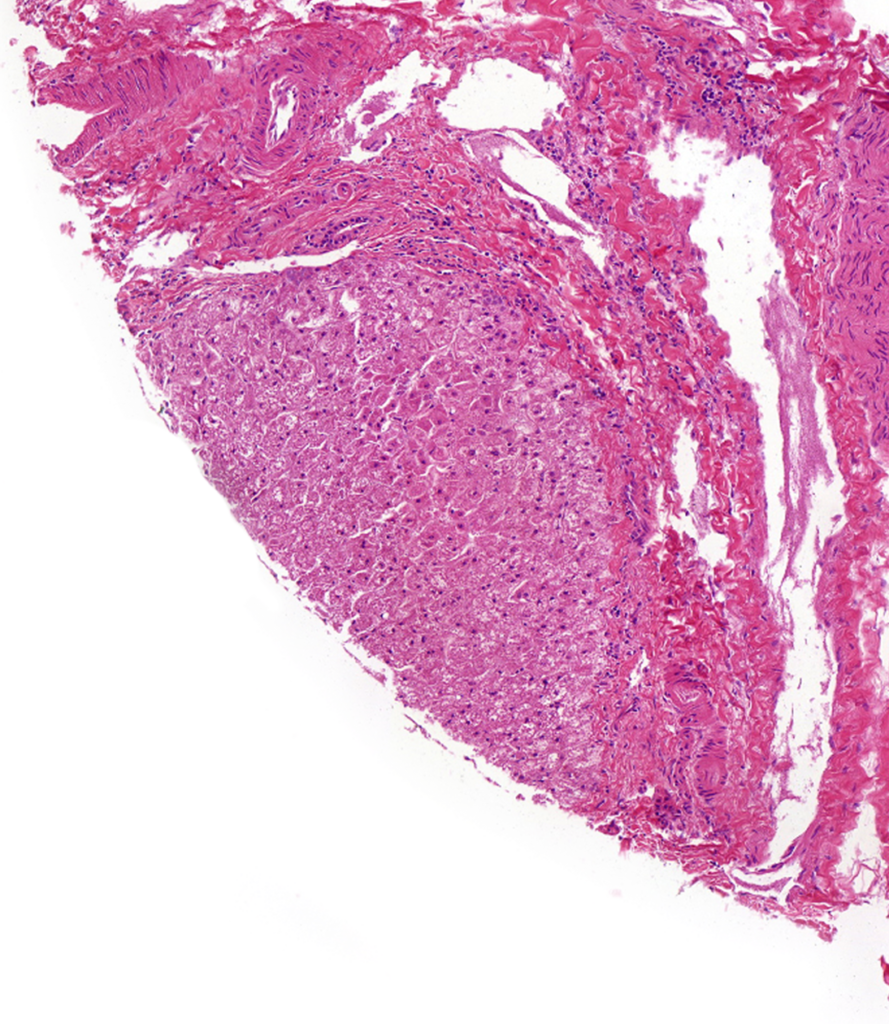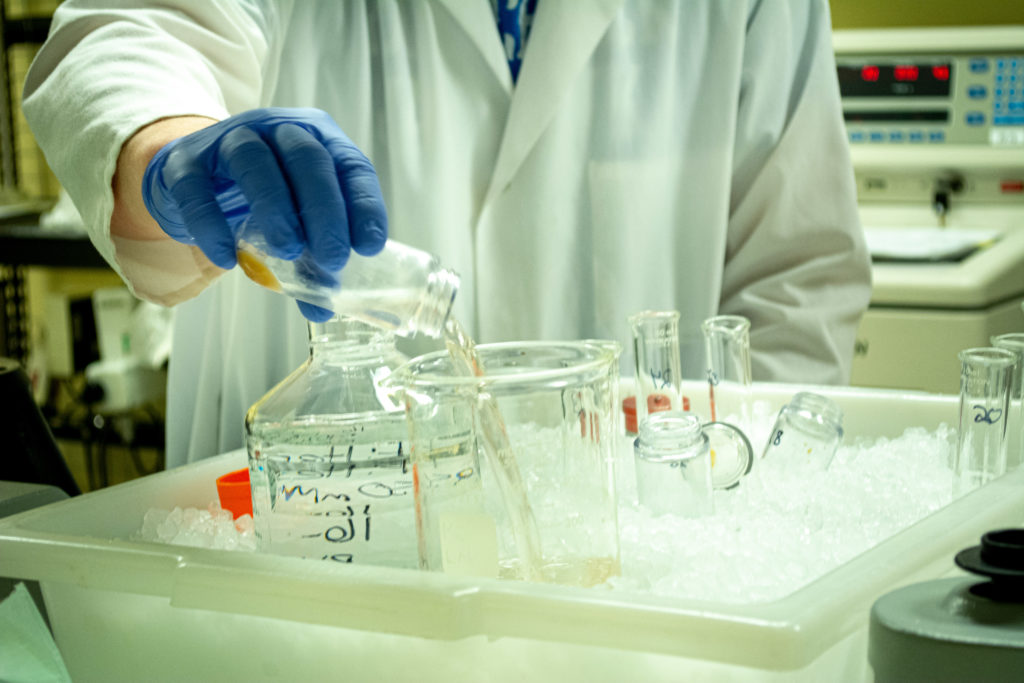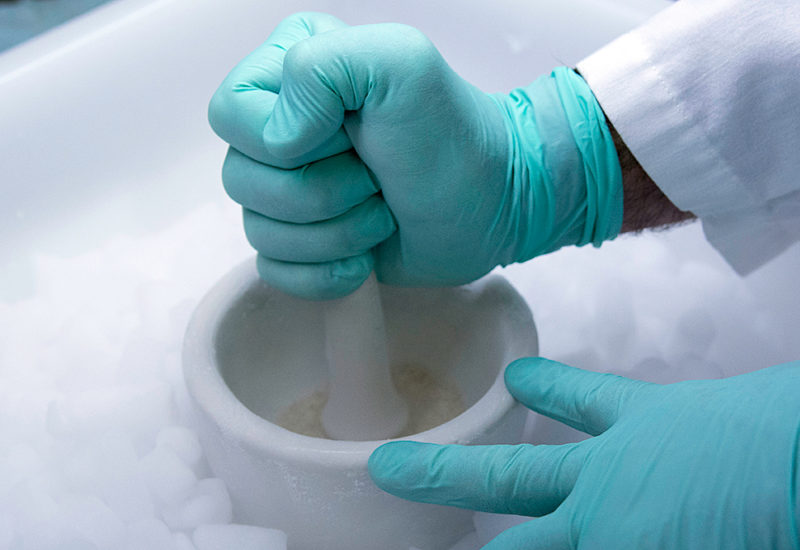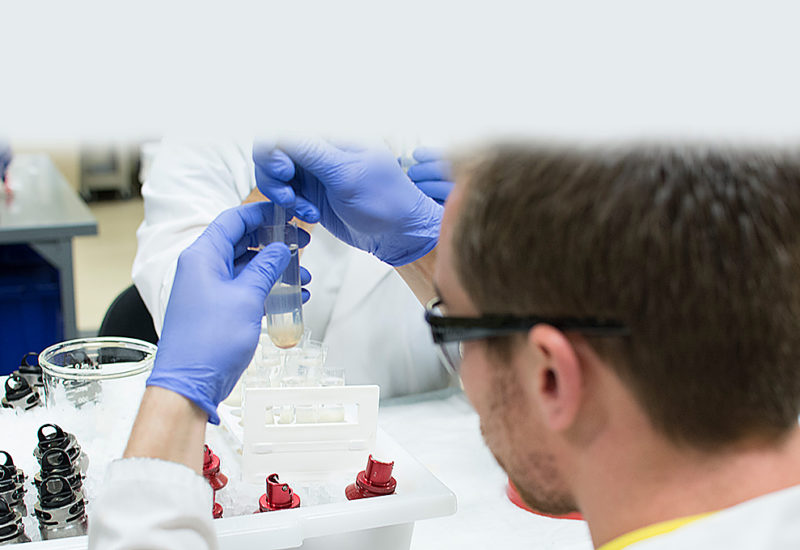We offer human liver microsomal preparations from individual donors that have been genotyped for the presence of a specific single nucleotide polymorphism (SNP). Genotyped human liver microsomes can be used to investigate the influence of allelic variance on the safety and efficacy of new molecular entities (NME). Genotyped human hepatocytes are also available.

Genotyped Human Liver Microsomes
Genetically-defined microsomes and hepatocytes are available in high activity, moderate activity and no activity categories based on published reports describing the allelic variant’s effect on the enzyme’s activity. These mirosomes come in standard 0.5 mL volume format for the following polymorphically-expressed enzymes:
Available Genotyped Human Liver Microsomes
Human liver microsomes contain a wide variety of drug metabolizing enzymes and are a recommended test system for assays including metabolite identification (MetID), metabolic stability, enzyme inhibition, reaction phenotyping, and other in vitro drug metabolism and pharmacokinetics (DMPK) studies.
Polymorphic Enzyme Details
CYP2C9
CYP2C9 is the second most abundant CYP, following CYP3A4, in the human liver. It plays a dominant role in the metabolism of ~10% of all therapeutic drugs1, including a wide variety of analgesics, anti-infectives, NSAIDs, oral hypoglycemics, anticoagulants, diuretics and antiepileptics.
The two most common variant alleles are CYP2C9*2 and CYP2C9*3. These variants are due to SNPs (single-nucleotide polymorphisms) 430C>T and 1075A>C, respectively. CYP2C9 shows high inter-ethnic and intra-ethnic variability, with CYP2C9*2 and *3 frequency nearly 20% in some Caucasian populations and undetectable in some African American and Asian populations. The intrinsic clearance of drugs metabolized by CYP2C9*1 is usually greater than that of CYP2C9*2 or *3, with CYP2C9*2 usually having a greater rate than *3. CYP2C9*5 also shows decreased activity compared to the wild type and CYP2C9*6 shows no activity. Detailed descriptions of the nucleotide changes characterizing individual alleles and their effects on protein expression and the CYP2C9 phenotype can be found at www.pharmvar.org.

Most common variants: CYP2C92 and CYP2C93. Low frequency alleles CYP2C95 and CYP2C96, identified in African Americans, are characterized by decrease and no activity, respectively.
CYP2C9 Allele Frequency
| Allele | African American | Asian | Caucasian | Hispanic |
|---|---|---|---|---|
| CYP2C9*1 | 0.94 – 0.995 | 0.88 – 0.989 | 0.695 – 0.940 | 0.849 – 0.922 |
| CYP2C9*2 | 0.0 – 0.04 | 0.0 – 0.04 | 0.08 – 0.191 | 0.048 – 0.12 |
| CYP2C9*3 | 0.0 – 0.023 | 0.011 – 0.13 | 0.033 – 0.17 | 0.0 – 0.066 |
| CYP2C9*5 | 0.017 – 0.13 | ND | ND | ND |
| CYP2C9*6 | 0.006 | ND | ND | ND |
ND = Not detected
Adapted from Scordo, et.al, 2001, Yoon, et. al, 2001, Dickman, et. al, 2001, Blaisdell, et. al, 2004, Kirchheiner, et. al, 2004, DeLozier, et. al, 2005, Garcia-Martin, et. al, 2006 and Rosemary and Adithan, 2007.
CYP2C19
Enzymatic activities of CYP2C19 vary significantly among ethnic populations, making it highly important for pharmaceutical studies. CYP2C19 is known to metabolize omeprazole, lansoprozole, propranolol, imipramine, mephenytoin, chloroguanide, hexabarbitone and diazepam. CYP2C19 polymorphisms that result in low CYP2C19 activity increase the risk of adverse reactions to some drugs.
The most common variants are CYP2C19*2 (681 G>A) and CYP2C19*3 (636G>A) (Scordo et al. 2004). CYP2C19*2 has a frequency as low as 0.091 in Caucasians and as high as 0.40 in some Asian populations; CYP2C19*3 is common only in Asian populations. CYP2C19*2 or CYP2C19*3 contribute to the majority of poor-metabolizer phenotypes in Caucasians and Asians but CYP2C19*4 and CYP2C19*5 also lack enzymatic activity. Phenotypically, poor metabolizers occur in 13 – 23% of Asian populations and 2 – 5% of Caucasian populations.
CYP2C19 Allele Frequency
| Allele | African American |
Asian | Caucasian | Hispanic |
|---|---|---|---|---|
| CYP2C19*1 | 0.75 – 0.87 | 0.540-0.70 | 0.83 – 0.909 | N/A |
| CYP2C19*2 | 0.10 – 0.25 | 0.20-0.40 | 0.091 – 0.161 | N/A |
| CYP2C19*3 | 0.0 – 0.02 | 0.0 – 0.14 | 0.0 – 0.04 | N/A |
| CYP2C19*4 | ND | 0.0 – 0.05 | 0.0 – 0.011 | N/A |
| CYP2C19*5 | ND | 0.0 – 0.0025 | ND | N/A |
N/A = No data available
ND = Not detected
Adapted from Xiao, et. al, 1997, Hamdy, et. al, 2002, Allabi, et. al, 2003, Melis, et. al, 2006, Tassaneeyakul, et. al, 2006, Rosemary and Adithan, 2007 and Zandvliet, et. al, 2007.
CYP2D6
On the high end of the CYP2D6 activity spectrum, we offer microsomes from donors carrying duplication of fully active alleles, referred to as ultra rapid metabolizers. On the low end of the CYP2D6 activity spectrum, we provide microsomes from donors carrying two inactive alleles.
CYP2D6 expresses more alleles than any other drug-metabolizing human P450 enzyme. Genetic polymorphism is the most common cause of the interindividual differences in metabolism of CYP2D6 substrates. Detailed descriptions of the nucleotide changes characterizing individual alleles and their effects on the CYP2D6 phenotype can be found at www.cypalleles.ki.se.
Genotypes present in our collection are organized based on activity score as defined by Gaedigk, et. al, 2008. This is a numerical expression based on the presence of fully-, partially-functional and non-functional alleles, shown here:
CYP2D6 Activity Scores
| Activity Score | Genotype | Activity |
|---|---|---|
| 3 | *1/*2×2 | High Activity |
| 2.5 | *2×2/*41 | Moderate Activity |
| 2 | *1/*1, *1/*2, *2/*2 | Moderate Activity |
| 1.5 | *1/*9, *1/*29, *1/*41, *2/*41 | Moderate Activity |
| 1 | *1/*3, *1/*4, *1/*5, *2/*3, *2/*4, *17/*29, *41/*41 | Moderate Activity |
| 0.5 | *4/*9, *4/*41, *5/*41, *6/*9 | Moderate Activity |
| 0 | *4/*4, *4/*5, *4/*6 | No Activity |
CYP3A5
Members of the CYP3A family are the most abundant CYP enzymes in the human liver and intestine, influencing circulating steroid levels and responsible for the oxidative metabolism of half of all drugs. When it is present, CYP3A5 can represent up to 50% of the total CYP3A protein in liver microsomes, suggesting an important role in the clearance of CYP3A substrates.
There are substantial CYP3A expression differences between individuals, which contributes greatly to variation in oral bioavailability and systemic clearance of CYP3A substrates. There are also pronounced inter-racial differences in CYP3A5 allelic frequency. The table below demonstrates allelic frequency variations among different races:
CYP3A5 Allele Frequency
| ALLELE | AFRICAN AMERICAN | ASIAN | CAUCASIAN | HISPANIC |
|---|---|---|---|---|
| CYP3A5*1 | 0.45 – 0.73 | 0.15 – 0.38 | 0.05 – 0.15 | 0.25 |
| CYP3A5*3 | 0.06 – 0.50 | 0.60 – 0.76 | 0.82 – 0.96 | 0.46 – 0.71 |
Adapted from Thompson, et al. 2004, Wang, et al. 2006, Kuehl, et al. 2001 and Lamba, et al. 2002.
UGT1A1
UGT1A1 (UDP-glucuronosyltransferase 1) is part of the glucuronidation pathway, transforming small molecules into excretable metabolites. It is a known metabolizer of estrogens (Yamanaka et al., 2007), bilirubin (Levesque et al., 2007), and pharmaceuticals, including irinotecan (Levesque et al., 2007), tranilast (Danoff et al., 2004), and some NSAIDs (Kuehl et al., 2005). A polymorphism in the promoter is associated with Gilbert syndrome (Buetler et al., 1998). Individuals with the wild type, UGT1A1*1, have a six TA repeat in the promoter. Individuals homozygous for the most common variant, UGT1A1*28, have a seven TA repeat in the promoter and have a 70% reduction in transcriptional activity compared to homozygous UGT1A1*1 individuals (Tukey et al., 2002).
UGT1A1 Allele Frequency
| Allele | African American | Caucasian |
|---|---|---|
| UGT1A1*1 | 0.45 – 0.52 | 0.588 – 0.715 |
| UGT1A1*28 | 0.035 – 0.08 | 0.285 – 0.388 |
UGT1A9
UDP-glucuronosyltransferases (UGTs) catalyze a wide variety of structurally dissimilar substrates, including drugs, endogenous molecules and carcinogens by glucuronidation; UGT1A9 is abundant in the human liver and is known for its reaction to phenols, steroids, organic acids, anticancer drugs and the procarcinogens in tobacco (Girard et al., 2004). UGT1A9 is most frequently studied for its interaction with the active metabolite of irinotecan and with the potentially specific probe propofol (Court 2005). UGT1A9*2 causes nucleotide change 8 (G>A) and amino acid change C3Y; UGT1A9*3 causes nucelotide change 98 (T>C) and amino acid change M33T. Villeneuve et al. (2003) showed that in HEK-293 cells, UGT1A9*3 dramatically impaired the conjugation of the cancer drug SN-38 (3.8% of wild type), but not flavopiridol-G, an obvious substrate-dependent impact; neither drug’s conjugation was impaired by UGT1A9*2. Compared to the wild type UGT1A9*1, UGT1A9*3 is a low glucuronidating allele (Villeneuve et al., 2003).
UGT1A9 Allele Frequency
| Allele | African American | Caucasian |
|---|---|---|
| UGT1A9*1 | 0.975 | 0.964 – 0.978 |
| UGT1A9*2 | 0.025 | – |
| UGT1A9*3 | – | 0.006 – 0.036 |
1 “Chapter 17 Pharmacokinetics Pharmacogenomics.” Handbook of Pharmacogenomics and Stratified Medicine, by Sandosh Padmanabhan, Elsevier Academic Press, 2017, pp. 341–364.
Related Downloadable Scientific Content
Poster: Microsomal Cytochrome P450 Enzyme Activities in Nonalcoholic Steatohepatitis Livers

